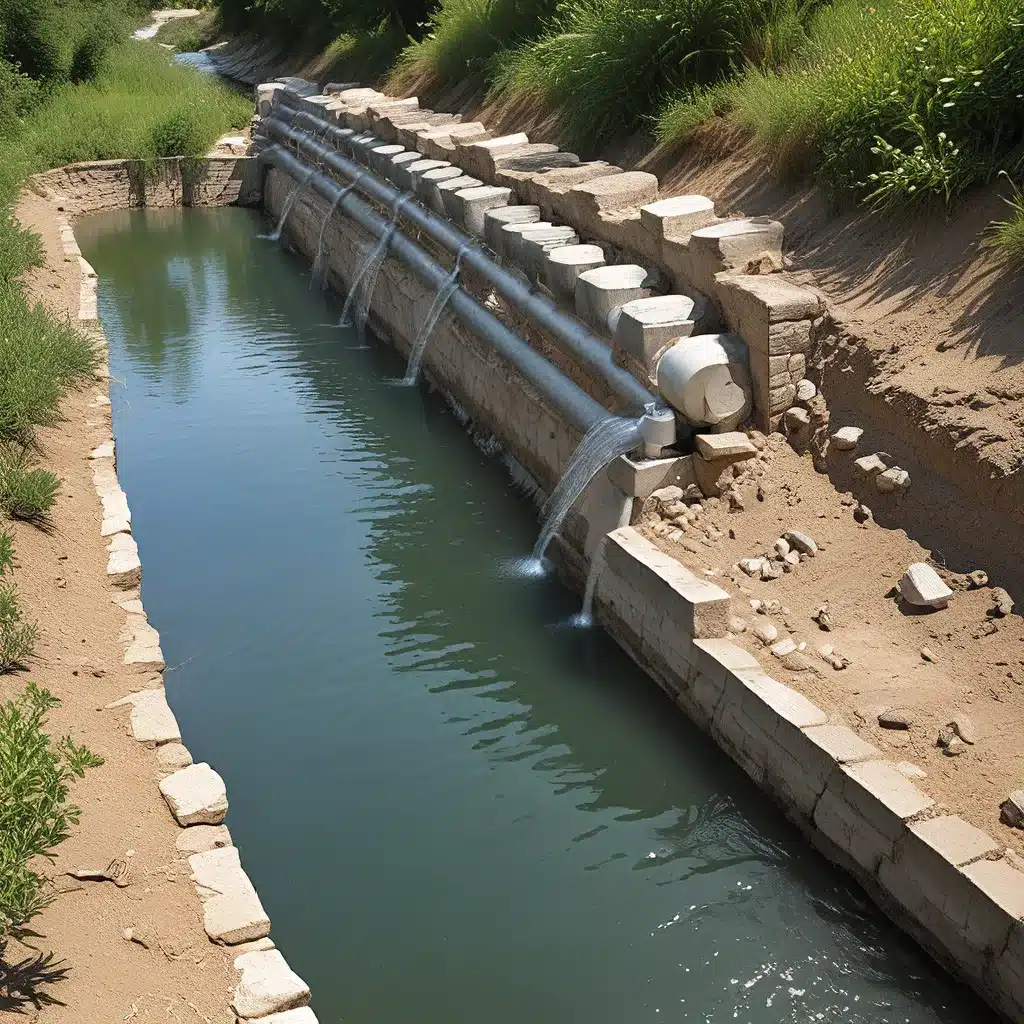
As a passionate advocate for sustainable water management, I’ve been deeply fascinated by the intricate relationship between water and energy. It’s a dance of interdependence, where the two seemingly disparate elements are inextricably linked, like two sides of the same coin. And let me tell you, unraveling this water-energy nexus is no easy feat – it’s a tangled web of complexities, challenges, and potential solutions that require a keen eye and a creative mind.
Unpacking the Water-Energy Conundrum
Let’s start by diving into the heart of the matter. Water and energy are the lifeblood of our modern world, powering our homes, our industries, and our very way of life. But here’s the kicker – the production, treatment, and distribution of water requires a significant amount of energy, while the generation and transmission of energy, in turn, relies heavily on water. It’s a never-ending cycle, a perpetual balancing act that, if not carefully managed, can lead to a veritable energy and water crisis.
Recent estimates suggest that the water sector accounts for approximately 13% of the total energy consumption in the United States. And the thirsty energy sector? It guzzles up a whopping 49% of the nation’s total freshwater withdrawals. It’s a mind-boggling interdependence, isn’t it?
But here’s where it gets really interesting – the impacts of this water-energy nexus go beyond just the numbers. The inefficient use of water and energy can have far-reaching consequences on the environment, the economy, and even our own health and well-being. Imagine a world where water scarcity and energy shortages are the norm, where the very systems that sustain us are in a state of crisis. It’s a sobering thought, but one that we can’t afford to ignore.
Diving into the Data: Uncovering Trends and Opportunities
Now, I know what you’re thinking – all this talk of water and energy sounds a bit daunting, doesn’t it? But fear not, my friends, because there’s a glimmer of hope on the horizon. Recent research has uncovered some fascinating trends and insights that could hold the key to optimizing the water-energy nexus.
One study, for example, found that implementing advanced water treatment technologies could lead to a significant reduction in energy consumption. We’re talking about cutting-edge membrane filtration systems, smart pumping technologies, and innovative wastewater reclamation processes. These innovative solutions can not only slash energy use but also improve water quality and availability. It’s a win-win situation, if you ask me.
But that’s not all. The energy sector itself is also undergoing a major transformation, with a growing focus on renewable sources like solar, wind, and hydropower. Researchers have found that these clean energy alternatives can significantly reduce the water footprint of energy production, helping to alleviate the strain on our precious water resources.
Bridging the Divide: Collaborative Solutions for a Sustainable Future
Now, I know what you’re thinking – all this talk of data and research is great, but what about the real-world implications? How do we actually put these insights into practice and create a more sustainable water-energy landscape?
Well, my friends, the key lies in collaboration and a holistic approach to problem-solving. It’s not enough for water managers and energy producers to work in silos; we need to come together, pool our collective knowledge, and develop integrated solutions that address the water-energy nexus as a whole.
Imagine a world where water treatment facilities are powered by renewable energy sources, where wastewater is reclaimed and reused to reduce the strain on our freshwater supplies. Or envision a future where smart grid technologies and energy-efficient pumping systems work in tandem to optimize the water-energy balance. These aren’t just pipe dreams – they’re real-world solutions that are already being implemented in various parts of the world.
And you know what? I believe that Inland Waters, Inc. is at the forefront of this water-energy revolution. With their cutting-edge technologies, their commitment to sustainability, and their collaborative approach to problem-solving, they’re poised to play a pivotal role in shaping the future of water management.
Embracing the Challenge: A Call to Action
So, my friends, where do we go from here? Well, the answer is simple – we dive in, we embrace the challenge, and we work together to create a more sustainable future.
It’s time to rethink the way we approach water and energy management, to break down the silos and find innovative solutions that address the complex issues at the heart of the water-energy nexus. And let me tell you, it won’t be easy – there will be obstacles, there will be setbacks, and there will be plenty of naysayers along the way.
But you know what they say – the greatest achievements are often the most challenging. And I, for one, am up for the task. Are you?
Inland Waters, Inc. is leading the charge, and I believe that with the collective efforts of forward-thinking organizations, researchers, and engaged citizens, we can optimize the water-energy nexus and create a more sustainable world for generations to come.
So, let’s roll up our sleeves, let’s get to work, and let’s show the world that when it comes to tackling the water-energy challenge, we’re a force to be reckoned with. The future is ours to shape, my friends, so let’s get started.


